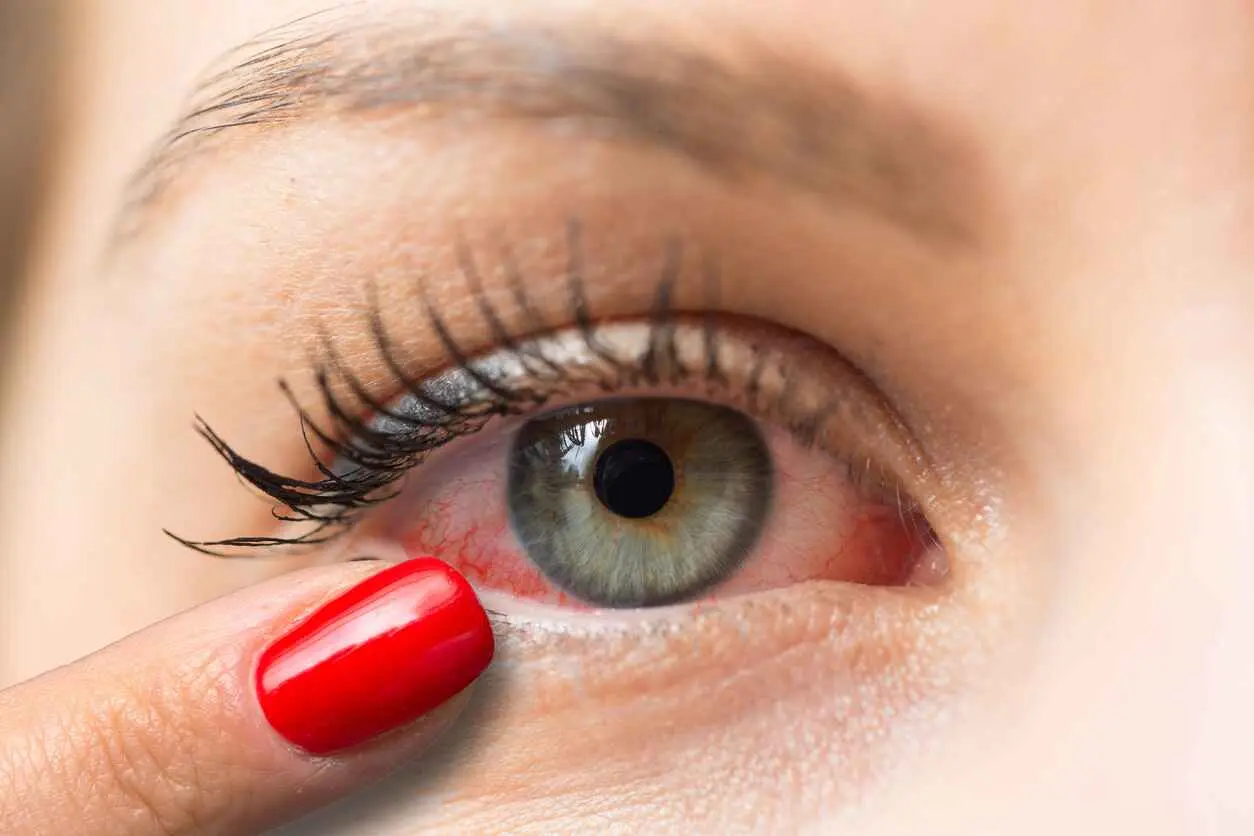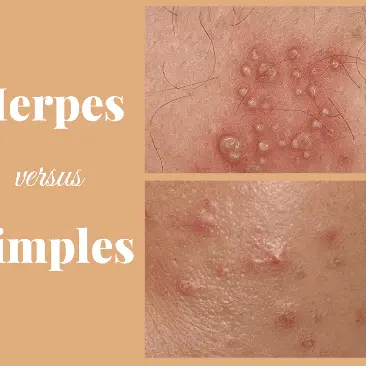What Is Infective Conjunctivitis Or Pinkeye?
Conjunctivitis, or pink eye, is when the eye's conjunctiva gets inflamed. This makes the eye look red or pink, making it feel swollen and irritated. There might also be some mucus. When an infection causes it, it's straightforward to spread to others.
The conjunctiva is a thin layer that covers the inside part of the eyelids and the white part of the eyes.
This inflammation makes tiny blood vessels in the conjunctiva more visible, which causes discomfort and a red or pink colour. It can last from 1 to 4 weeks or even more.
Irritation, allergies, or infections can cause pinkeye. This explanation will mainly talk about pinkeye caused by infections.
Types Of Conjunctivitis
Conjunctivitis, or pinkeye, can be classified in different ways:
- Irritant Or Allergic Conjunctivitis: This happens when something like pollen or chlorine irritates the eye, leading to inflammation and irritation.
- Infective Conjunctivitis: This type is caused by bacteria or a virus.
- Acute Or Chronic: Acute conjunctivitis typically lasts 1 to 2 weeks, sometimes up to 3 to 4 weeks. If it lasts more than four weeks, it's called chronic conjunctivitis.
Symptoms
Signs and symptoms of conjunctivitis (pinkeye) can include:
- Redness: This is due to the small blood vessels in the eye becoming irritated and larger.
- Discharge: Some fluid may come out of the eye.
- Watery Eyes: The tear glands may work too much.
- Sticky Or Crusty Eyelashes: This often happens when waking up.
- Soreness And Grittiness: It can feel like sand in the eye.
- Swelling: This can be from inflammation or from rubbing the eye.
- Itching, Burning, Or Irritation: The eye may feel uncomfortable.
- Discomfort With Contact Lenses: They may feel wrong when used.
If it's an infection, it might start in one eye and then move to the other. If it's caused by something like dust, it usually affects both eyes simultaneously.
Depending on the cause, some people might also have flu-like symptoms such as:
- Swollen lymph nodes
- Fever
- Headache
- Aching limbs
- Sore throat
These could be early signs of an infection.
Is Conjunctivitis Contagious?
Conjunctivitis, or pinkeye, is highly contagious when caused by an infection. It can be transmitted through various means, including:
- Close personal contact, such as shaking hands and subsequently touching the eyes.
- Inhalation of airborne droplets when an infected person coughs or sneezes.
- Contact with contaminated surfaces or objects carrying the infectious germs, followed by touching the eyes.
Conjunctivitis is most contagious when symptoms are present. It is advisable for individuals with the condition to stay home during this period to prevent its spread to others.
When To See A Doctor
If an individual suspects they have an eye infection, it is advisable to seek medical advice. However, it is crucial to seek urgent medical attention if any of the following symptoms are present:
- Experiencing severe eye pain.
- Noticing vision changes.
- Sensitivity to light (photophobia).
- Observing that one or both eyes are intensely red.
- Suffering an eye injury or having something lodged in the eye.
- Experiencing a severe headache accompanied by nausea or a feeling of sickness.
These symptoms could signal a more serious eye condition or underlying health issue, and prompt medical evaluation is essential in such cases.
Causes Of Conjunctivitis
Various factors, including allergies, viral infections, or bacterial infections, can cause conjunctivitis. In approximately 80% of cases, conjunctivitis is viral in origin, with common viruses responsible for these infections including:
- Adenoviruses
- Herpes viruses
- Enteroviruses
Bacterial conjunctivitis, on the other hand, may be caused by different bacteria, including:
- Staphylococcus aureus
- Streptococcus pneumoniae
- Haemophilus influenza
It's worth noting that bacterial conjunctivitis can also be linked to sexually transmitted infections (STIs), such as chlamydia, in some cases.
Can COVID-19 Cause Pinkeye?
In July 2020, there was a report of someone who had COVID-19 with only conjunctivitis as their symptom. This made some people wonder if conjunctivitis could be a sign of COVID-19.
However, it's essential to know that coronaviruses, including the one that causes COVID-19, usually don't cause conjunctivitis. Scientists are still studying this to determine how often conjunctivitis happens as a symptom of COVID-19.
So, while it's possible to have conjunctivitis with COVID-19, it's not a common symptom, and the main symptoms like fever, cough, and breathing problems are more typical signs of the disease.
Causes In Newborns
Newborns can develop pinkeye, which can be caused by infection, irritation, or a blocked tear duct. These different causes can result in similar symptoms.
The bacteria or viruses responsible for these infections can be transmitted to the baby during childbirth, even if the person giving birth has no symptoms.
The most common bacterial cause of newborn pinkeye is Neisseria gonorrhoeae, which causes gonorrhoea. According to the Centers for Disease Control and Prevention (CDC), Chlamydia trachomatis can also lead to it, and less commonly, the virus that causes genital herpes.
The CDC also notes that symptoms of bacterial conjunctivitis due to C. trachomatis typically appear 5–12 days after birth, while if it's due to N. gonorrhoeae, symptoms usually show up after 2–4 days.
Sometimes, newborns' pinkeye can react to eye drops given at birth to prevent infection. The symptoms typically go away within 24–36 hours in these cases.
Other Causes Of Red Eyes
There are numerous causes of red eyes, including conditions such as:
- Blepharitis
- Acute glaucoma
- Keratitis
- Iritis
Some of these conditions have the potential to result in vision loss. It is essential for individuals who do not see improvement in their symptoms with treatment to revisit their doctor for further evaluation and care.
Diagnosis
To diagnose conjunctivitis, a doctor typically follows these steps:
- Observe the signs and symptoms of the eye condition.
- Ask relevant questions, such as inquiring about the patient's eye history and allergies.
- In some cases, less commonly, they may take a swab to test for the presence of bacteria or viruses.
Medical Treatment
In most cases, conjunctivitis clears up independently without needing medical treatment. When a virus causes it, doctors usually suggest managing the symptoms with home remedies. If it's linked to allergies or irritation, avoiding the substance causing the reaction is essential.
If a doctor suspects a bacterial infection, they might recommend antibiotics. Some doctors may prescribe antibiotic eye drops or other treatments just in case, but it's not guaranteed that these will be effective.
Remember, antibiotics won't help if the infection is viral.
If your symptoms don't improve with treatment or you experience pain or blurry vision, you must return to the doctor for further evaluation.
In Newborns
In many states, doctors routinely use antibiotic drops or ointment in the eyes of all newborns to prevent conjunctivitis.
If necessary, a doctor may prescribe treatment, which could include:
- Antibiotics are administered orally, intravenously, as drops, or in ointment form.
- Apply a warm compress gently to reduce swelling and irritation.
- Gentle rinsing of the eyes with a saline solution.
- Delicate, warm massages to address a blocked tear duct.
It's crucial to carefully follow the doctor's instructions for managing conjunctivitis in newborns. Always remember to wash your hands thoroughly before and after using any treatment.
Using Eye Drops
Eye drops and ointment are meant to be applied directly to the eye. The amount you use depends on the type of medication. Some may find ointments easier to administer than eye drops for infants or young children.
Keep the dropper away from the eye and do not share eye drops to prevent the spread of infection.
After using eye drops, your vision may temporarily become blurry. For safety, ensure your vision has cleared before driving or operating machinery.
Prevention
To reduce the risk of getting or spreading infective conjunctivitis, you can:
- Avoid touching or rubbing your eyes.
- Wash your hands frequently or use hand sanitiser.
- Always remove contact lenses at night and follow lens hygiene instructions.
- Keep your eyeglasses clean.
- Refrain from sharing personal items like towels and makeup.
- Use goggles when swimming in a pool.
- Avoid swimming if you have an eye infection.
To lower the risk of irritant and allergic conjunctivitis:
- Ensure good room ventilation.
- Regularly clean and maintain air conditioning units.
- Steer clear of smoky environments.
Complications
Conjunctivitis typically doesn't lead to complications, but it can be a sign of a more serious underlying condition.
If someone has severe or persistent symptoms, seeking medical attention to prevent potential complications is essential.
In Newborns, most infants recover fully from infective conjunctivitis without issues. However, in rare cases, it can progress rapidly and affect their vision.
In the presence of a sexually transmitted infection (STI), additional complications can arise. For example, if left untreated, about 10–20% of newborns with infective conjunctivitis caused by C. trachomatis may also develop pneumonia, which can be life-threatening.
Takeaway
Pinkeye can have various causes, and infective conjunctivitis can be highly contagious.
Home remedies and over-the-counter (OTC) treatments are usually sufficient, and prescription drugs are unnecessary. Antibiotics are only effective if there is a bacterial infection.
To prevent the spread of pinkeye, practising proper handwashing and avoiding touching the eyes and face is essential.
You can receive consultations and assistance from Mobi Doctor for your healthcare needs.






